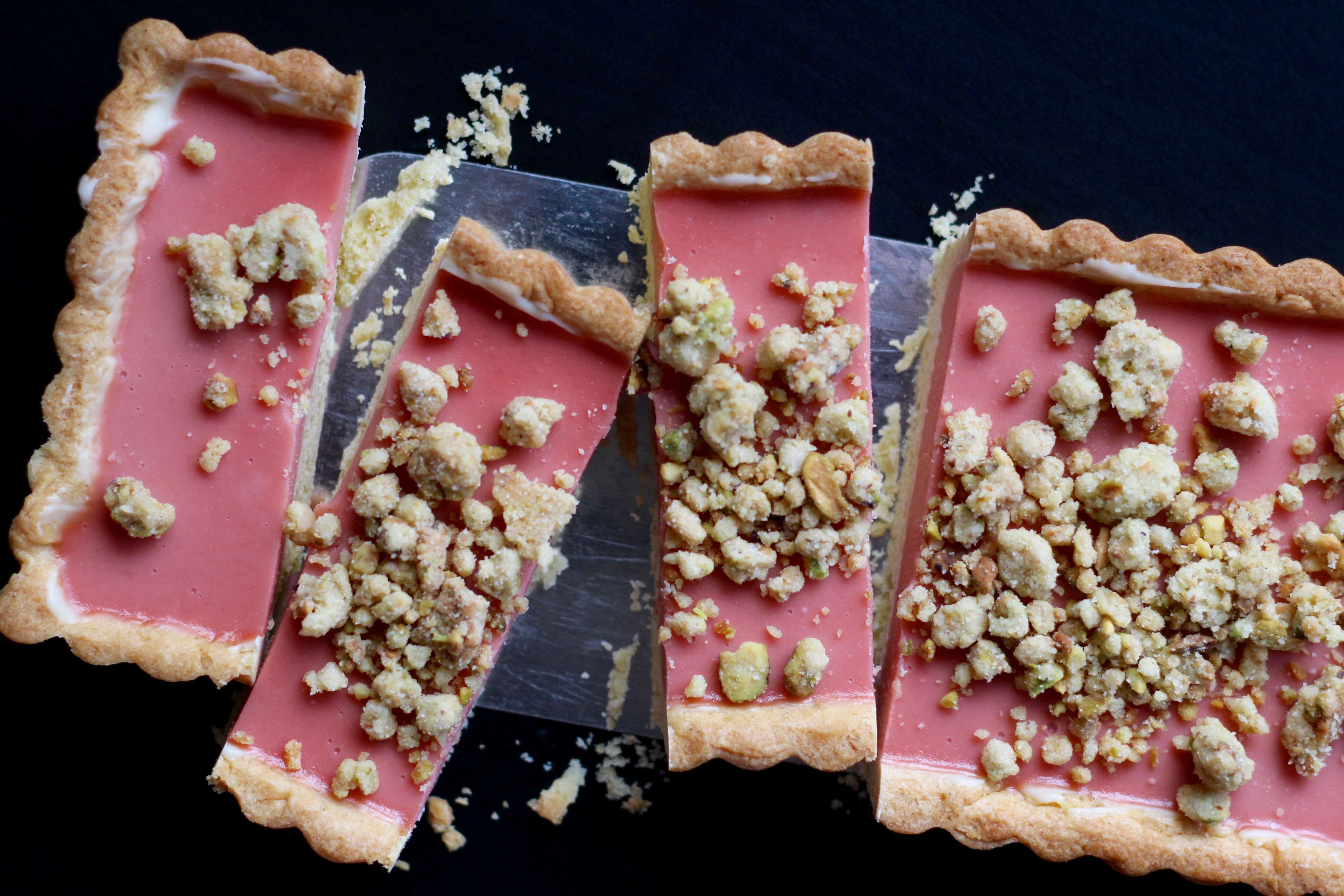
I can’t stop. I thought I was done with my rhubarb baking for the season, but I can’t help it. Apparently rhubarb grows like weeds in the Midwest (that’s a thing, right?), but it is sometimes curiously difficult to find in markets in California, or least where I live in the San Francisco Bay Area. (I know, I know– you don’t feel the least bit sorry for me, I get it.) When I manage to find it, I want to get all dramatic in the produce section and drop to my knees, sobbing with joy, but seeing as how that could get a little weird, I keep my feelings to myself and just happily snatch up those beautiful red stalks.
That being said… I’m starting to feel like I have a Rhubarb Curse. Nearly every rhubarb recipe I’ve tried for the past couple of years has not worked out on the first attempt; in some cases, even several attempts did not produce an edible, let alone successful, result. This tart… OY. This tart was practically the death of me this spring. I started working from a King Arthur Flour recipe, but it was a hot mess. No matter what I did, the tart was soggy within hours because the rhubarb juice soaked right into the crust. I tried cooking the filling longer to reduce it, but then I didn’t have enough for all the dough, and it still didn’t mitigate the sogginess issue. Also, the pistachio streusel topping had a gross texture when baked, so I decided to substitute the crumbles that I used last year on my Rhubarb Semifreddo.
However, I absolutely loved the King Arthur pâte sucrée dough– the one thing that kept me from tossing out the recipe altogether. I reworked the method a bit, but kept the ingredients. It is wonderful to work with and the flavor and texture were just what I wanted– no tearing, sticking, or other finicky dough behavior. (It contains baking powder, so I guess it’s not a true pâte sucrée, but given the trials and tribulations of this tart, I’m not here to quibble over leaveners.) My hope was to find a filling that could be added after fully baking the crust, rather than baking the filling in the crust, because I wanted to create a moisture barrier between the crust and juicy filling by brushing white chocolate over the crust. I found this gorgeous rhubarb-raspberry curd that would be fully cooked on the stove, and I knew that would be perfect. Except… yeah. No. (More on that in a moment…)
One more thing about the crust: The original recipe didn’t call for blind-baking, but I figured this would be a good idea with any fruit filling; yet, that was not enough to keep the crust sturdy. Also, the original baking temperature (375°F) was too hot, and the exposed crust edge was burnt by the time the tart was fully baked. I decided to blind-bake at 325°F, then turn up the temperature to 350°F to finish baking. This was better, but it didn’t matter because the filling still soaked through. For the third (successful) attempt, I baked the crust for 35 minutes at 325°F (20 minutes blind), producing the crisp, golden tart crust of my hopes and dreams. I felt so optimistic, but then…
I am apparently curd-impaired. I’ve struggled with lemon curd in the past; as in, it doesn’t thicken up enough to set into a pudding-like consistency. The same thing happened here, so I think I didn’t cook the egg/sugar mixture long enough, despite stirring well past the prescribed time. This recipe calls for a not-insignificant quantity of rhubarb, so I reeeeeally didn’t want to throw my runny curd in the trash. The question was, could it be rescued?? After chilling overnight, there was still very little thickening, so I went off to the internets in search of advice. Several sources advised adding gelatin to help the mixture set, so with fingers crossed, I re-warmed the curd and added sheet after sheet of leaf gelatin. It didn’t seem to do much at first, so I added 6 sheets; but when it started to cool in the water bath, I found that it was starting to set on the bottom, so I quickly poured the filling into the crust. Unfortunately I used a little too much gelatin, so the texture was beautifully cuttable, but more jello-esque than I would have liked– I would say about 4 sheets should be right for a firm, yet custardy texture. But! I was so thrilled that it worked, and it’s great to have this curd rescue technique in my back pocket for future fruit curd crises.
A few notes for success with this recipe:
- Roll the dough to ⅛” thick and not thicker. Because there’s baking powder in the dough, it will expand a bit. If you start with thicker dough, it will bake up so thick that the middle will stay soft and the tart will fall apart when you try to remove it from the pan. (Trust me, I did it for you, so you don’t have to find out the hard way. You’re welcome.)
- With these quantities, you will have enough dough for 2 rectangular tarts. I would have cut the dough recipe in half, except that I’d have to split a whole egg, which isn’t the end of the world (and you can certainly do that), but I figured I’d just make two tarts or store the other half in the freezer for another future tart.
- Brushing white chocolate over the cooled crust helps keep the dough from getting soggy. However, I’m not sure it’s even necessary, as the filling ended up being more firm than expected. I feel like it’s optional– if you’re serving the tart right away, don’t bother with it, but if you’re keeping it in the fridge for a day or so, go ahead and brush on the chocolate to keep the crust more crisp.
Despite my troubles, I was so pleased with this tart! The rhubarb-raspberry curd is bright and zingy with a slightly tart edge, and the pistachio crumbles provide a pleasant crunch in addition to a nutty flavor layer. This is a beautiful dessert to make for any sort of festive spring occasion, and you’ll have people oohing and ahhing because it’s so pretty. If anyone has fruit curd tips/suggestions/comments, please let me know below. 🙂
Rhubarb-Raspberry Pistachio Tart
Adapted from King Arthur Flour & Food52
Yields 1 4×14″ tart + dough for a second tart
The dough recipe makes enough for 2 tarts, and splitting the recipe requires splitting an egg, so I left the quantities as-is. You can either freeze the rest of the dough or double the filling for a second tart.
For the dough:
- 2 cups (240g) all-purpose flour
- ½ cup (57g) confectioners’ sugar
- ½ teaspoon salt
- 1 teaspoon baking powder
- ½ cup (1 stick/8 tablespoons/4 ounces) cold unsalted butter, cut into cubes
- 2 large egg yolks, at room temperature
- 1 large egg, at room temperature
- 1 teaspoon vanilla bean paste or pure vanilla extract
For the topping:
- ½ cup + 1 teaspoon (65g) all-purpose flour
- ½ cup (60g) shelled pistachios
- 5 tablespoons (63g) granulated sugar
- ¾ teaspoon kosher salt
- 3½ tablespoons (50g) unsalted butter, melted and cooled to room temperature
For the filling:
- 6 cups (about 680g) fresh rhubarb, cut into ½” pieces
- 1 cup (120g) fresh raspberries
- Scant ¾ cup (140g) granulated sugar, divided
- ¼ cup water
- 4 egg yolks
- 2 teaspoons fresh lemon juice
- 1 teaspoon grated lemon zest
- 5 tablespoons (70g) unsalted butter, cut into small pieces
- 4 sheets gold or silver leaf gelatin (if needed to set the curd)
For assembly:
- 2 ounces (60g) white chocolate, melted (optional – not needed if serving the tart immediately)
To make the dough:
In a food processor fitted with the metal blade, pulse the flour, confectioners’ sugar, salt, and baking powder together a few times until evenly blended. Add the cold butter cubes and pulse until the mixture is uniformly crumbly– keeping pulsing to break down any large butter chunks.
In a small bowl, whisk together the egg yolks, egg, and vanilla paste. Pour this into the food processor and pulse several times just until the mixture comes together into a cohesive ball of dough around the blade. Check to see if there are any obvious butter pockets; if so, pulse another couple of seconds.
Dump the dough onto a work surface, divide it into two equal pieces (weighing recommended), and gently shape them into rough rectangles. Wrap them tightly in plastic, and refrigerate for at least 4 hours, or overnight.
To make the topping:
While the dough is resting, make the pistachio crumbles. Preheat an oven to 325°F and line a rimmed half-sheet pan with parchment paper.
Place the pistachios in a small food processor and pulse until finely chopped with a few bigger pieces remaining. Add the flour, sugar, and salt, and pulse several time until the ingredients are evenly combined. Transfer the mixture to a medium mixing bowl and add the melted butter; gently fold it into the dry ingredients to form crumbly clusters. Turn the clusters out onto the sheet pan and spread them out evenly in one layer. Bake for about 15-18 minutes, or until they are lightly golden. Let them cool completely on the sheet pan set over a wire cooling rack. They will still be a little soft when they come out of the oven, but will firm up as they cool. Transfer the crumbles to an airtight container until ready to use. (They freeze very well and can be made well ahead.)
To shape & bake the dough:
Have a 4×14″ long tart pan with removable bottom ready nearby; it does not need to be greased.
Once the dough has rested and chilled, remove one piece from the fridge and roll it out to a ⅛”-thick long rectangle on a lightly floured work surface. If the dough gets sticky, give it a light dusting of flour, but it shouldn’t need much. Carefully transfer the long piece of dough to the tart dish and nestle it inside. Press the dough into the corners of the pan and firmly up the sides. You can cut off any overhanging dough with your hands or roll the rolling over the top of the pan. (You won’t have as much overhang as I had in this photo.) Transfer the pan to the fridge for 30 minutes to firm up the dough.
Meanwhile, preheat an oven to 325°F and place a rack in the center position.
Line the dough completely with parchment paper and fill the tart with pie weights (ceramic balls, dried beans, or raw rice). Blind-bake the crust for 20 minutes, then carefully remove the parchment and weights. Bake the crust for another 15-20 minutes, or until golden brown. Let it cool completely on a wire cooling rack.
To make the filling:
Place the rhubarb pieces, raspberries, ¼ cup (50g) sugar, and water in a medium saucepan over medium heat. Stir them together to coat the fruit and cook, stirring frequently, until the sugar has dissolved and the fruit has softened and broken down. Cook for another 1-2 minutes (it will be bright pink and very bubbly), and remove from heat. Scrape the mixture into a fine-mesh sieve set over a bowl and stir the fruit vigorously to press out the liquid, pressing and scraping it against the mesh; it will be a gorgeous dark pink juice, with mushy solids left in the strainer. Set the juice aside and discard the solids or reserve them for another use. (After extracting what I could, I let it drain for a while over a large measuring cup, and I got exactly 2 cups of juice.)
Fill a pot about ⅓ of the way up with water and set it to a gentle simmer. Prepare an ice bath in large bowl by filling it ⅔ with ice and cold water.
Place the egg yolks, scant ½ cup (90g) sugar, lemon juice, lemon zest, and butter in a medium heatproof bowl (preferably metal) and put the bowl over the pot of water on medium-low heat. Whisk everything together, keeping the eggs moving constantly so they don’t cook, until the sugar is dissolved and the butter melts. Continue whisking until the mixture begins to thicken. (This is where I had some trouble– it didn’t seem to thicken much after almost 10 minutes, but I probably should have let it keep going.) Stream in the rhubarb/raspberry juice and continue whisking, about 5-7 minutes, until the mixture thickens to a custard-like consistency. Remove the bowl from the atop the pan, and stir to release excess heat. Nestle the bowl in the ice bath and keep stirring occasionally. Place a piece of plastic wrap directly on the surface of the raspberry-rhubarb curd and let it cool completely to room temperature. Store it in the fridge if you’re not using it right away.
Now. If, like me, fruit curd is the bane of your existence for not thickening properly, do not fret! Adding bloomed gelatin will set the mixture. Place 4 sheets of gold or silver gelatin in a bowl of cold water to soften for a few minutes. When the sheets have softened, gently separate them if stuck together and wring out the excess water; stir them into the warm curd until melted. Proceed with the ice bath above, making sure to stir frequently so that the curd on the bottom doesn’t set faster than the top.
To assemble the tart:
If you plan to serve the tart several hours later or the next day, brush the bottom and sides of the tart crust with the melted white chocolate. Place the pan in the freezer for 5 minutes to firm up the chocolate. If you plan to serve the tart as soon as it sets, this step is not necessary.
Pour the cooled raspberry-rhubarb curd into the tart crust and smooth the top if needed. Refrigerate the tart for at least 4 hours to set, or overnight. Scatter the pistachio crumbles over the top once the filling has set, or right before serving.
© Dafna Adler & Stellina Sweets, 2017.
SaveSaveSaveSave





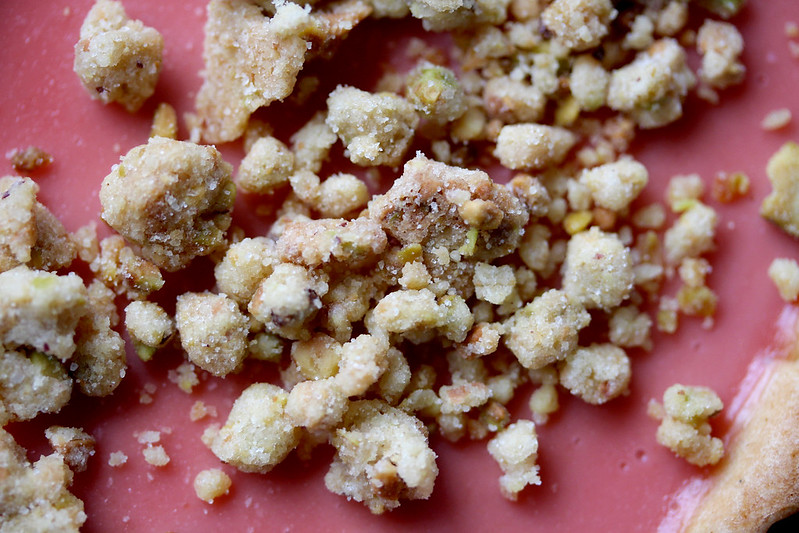
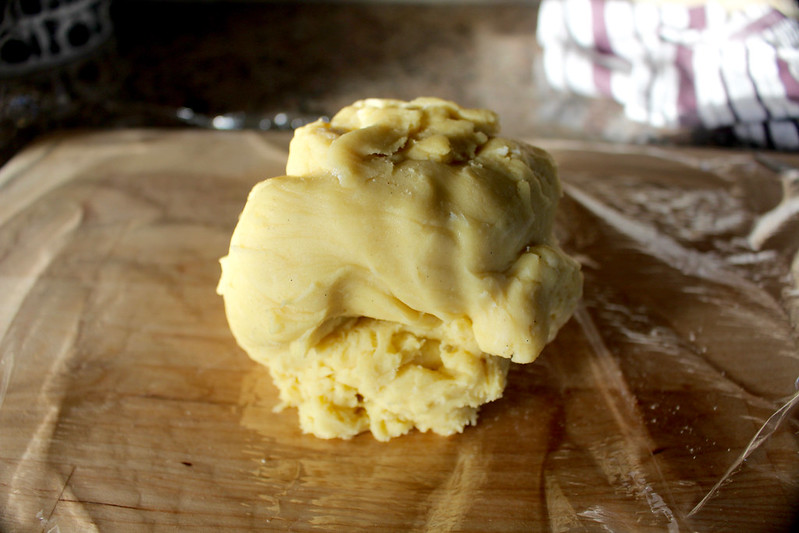

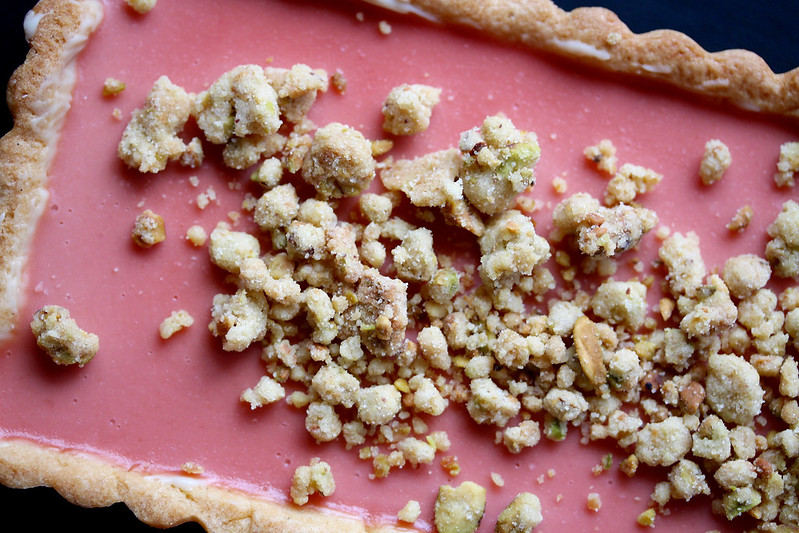


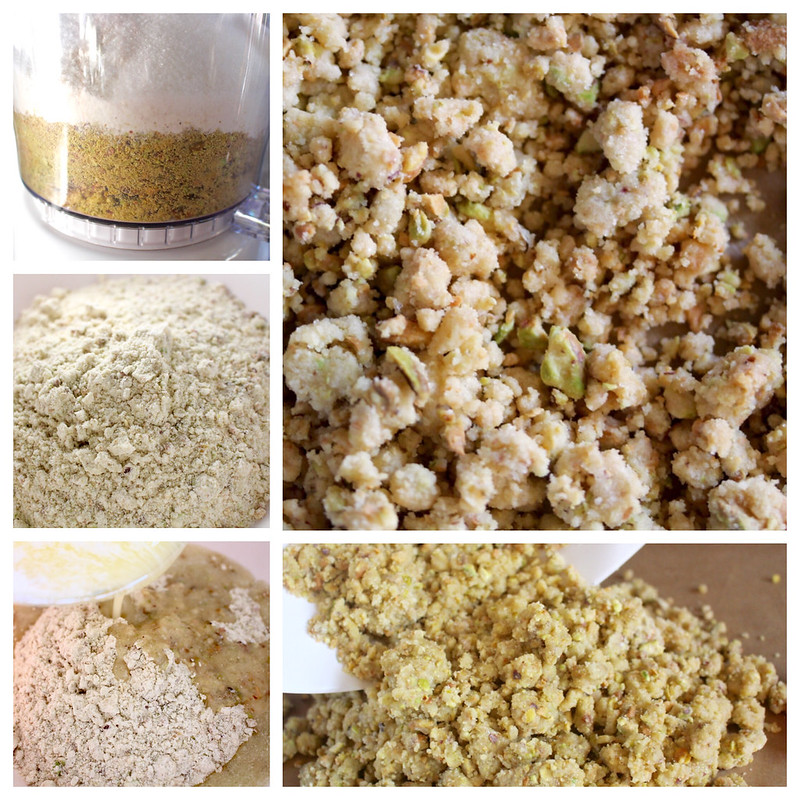
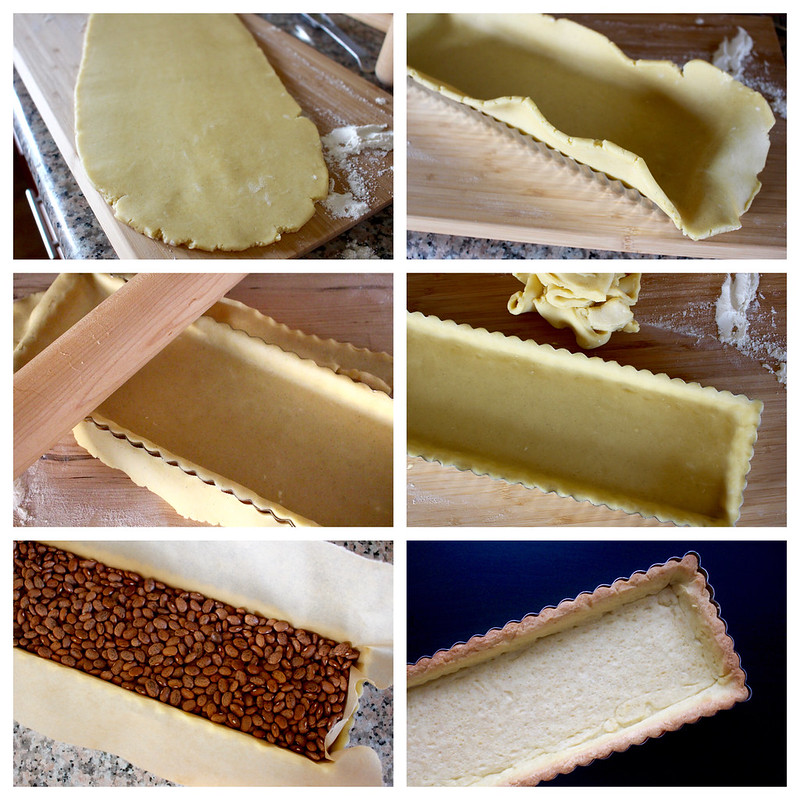
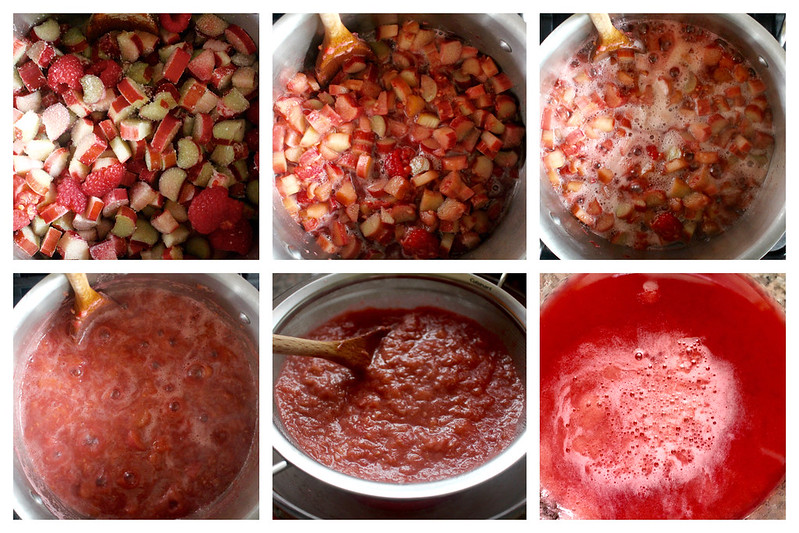
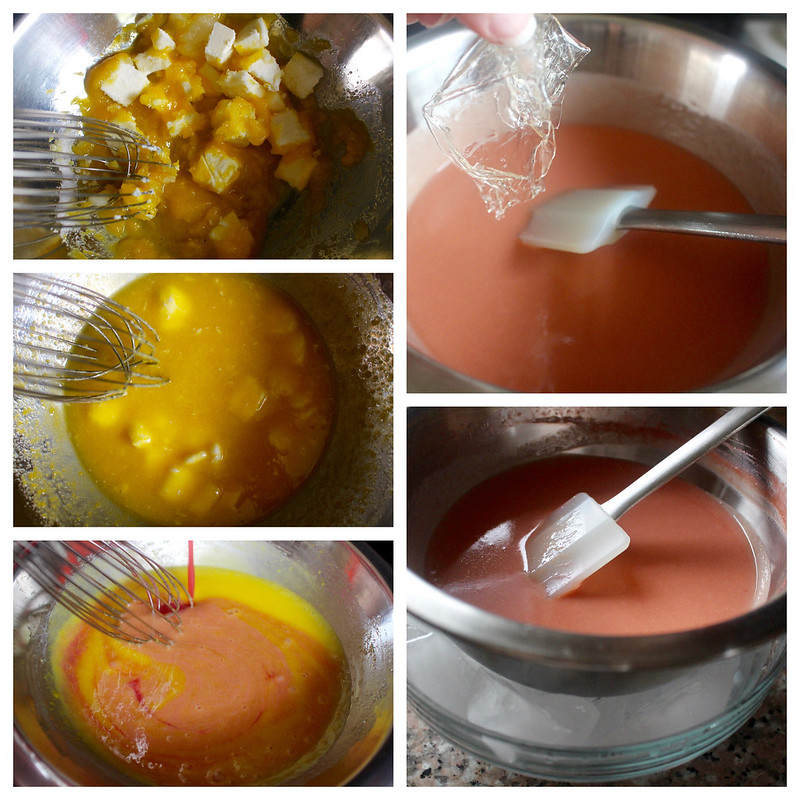

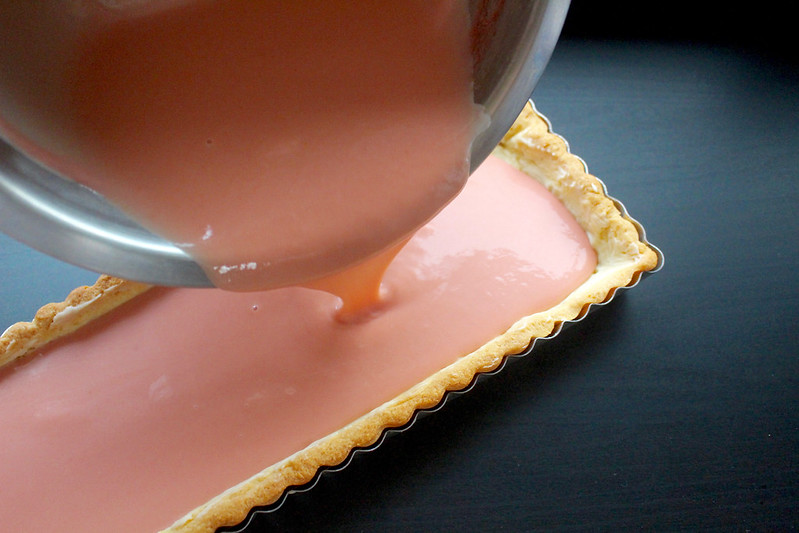
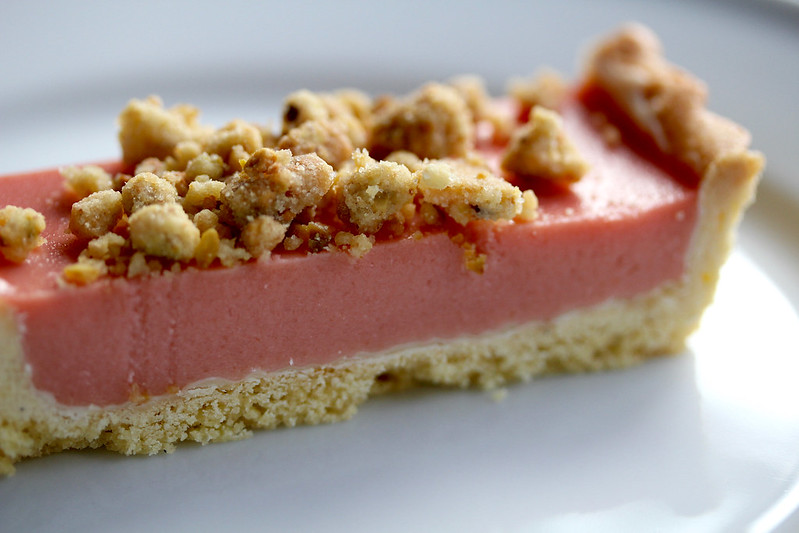
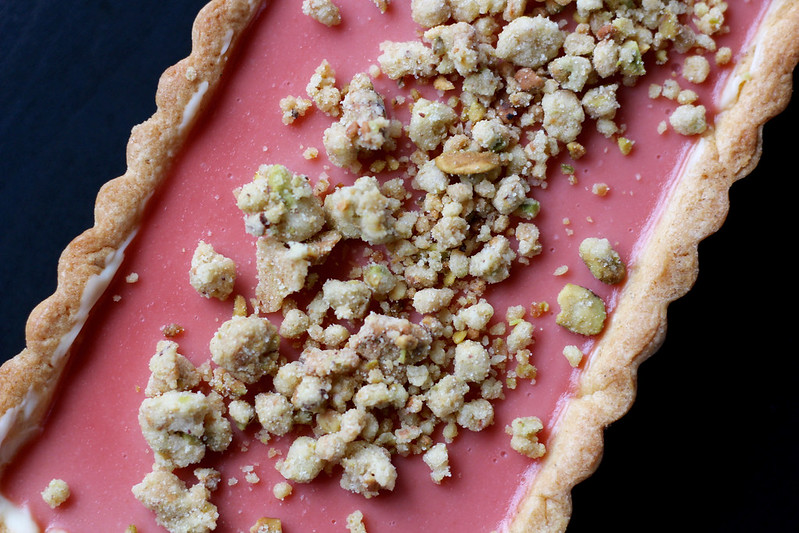
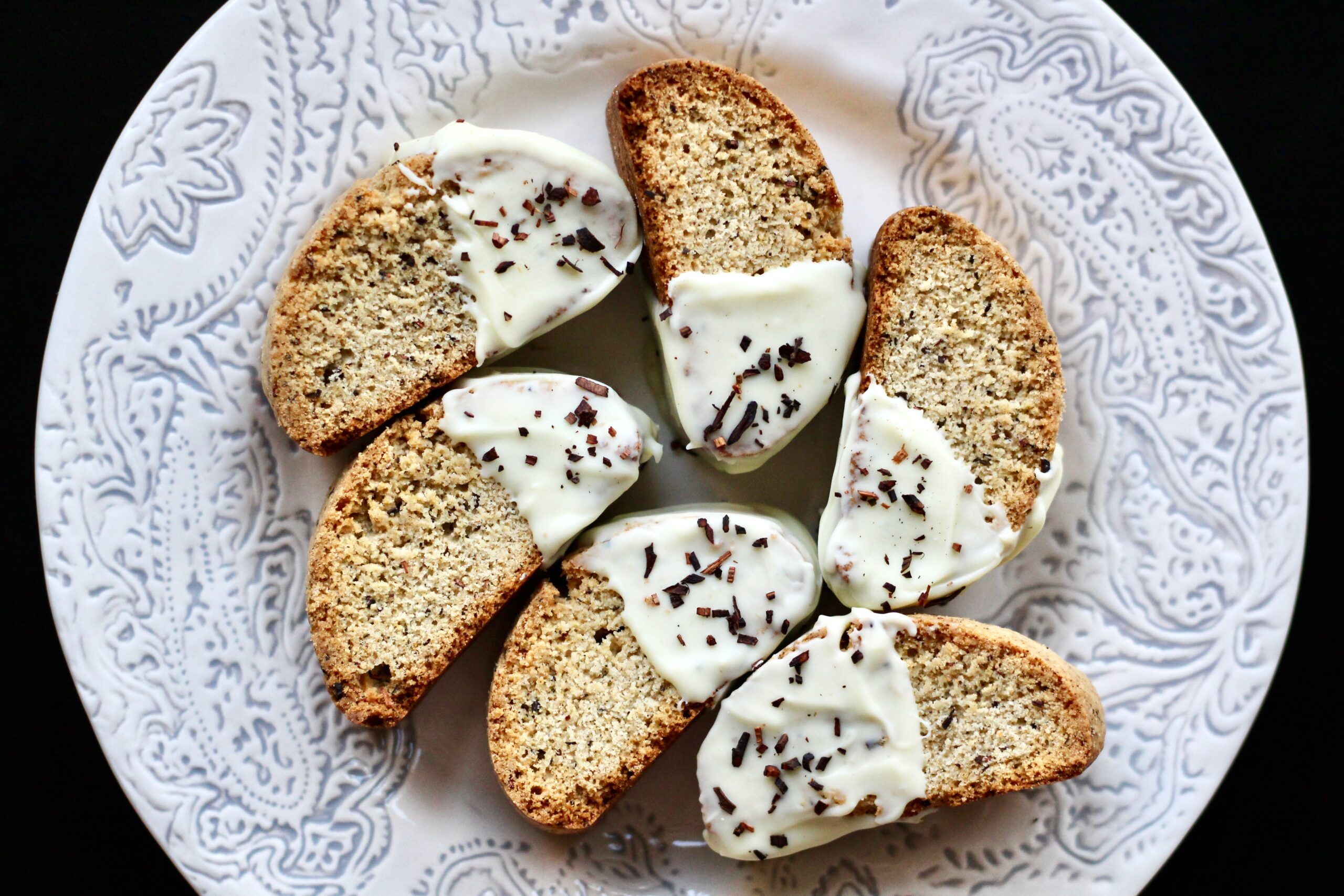
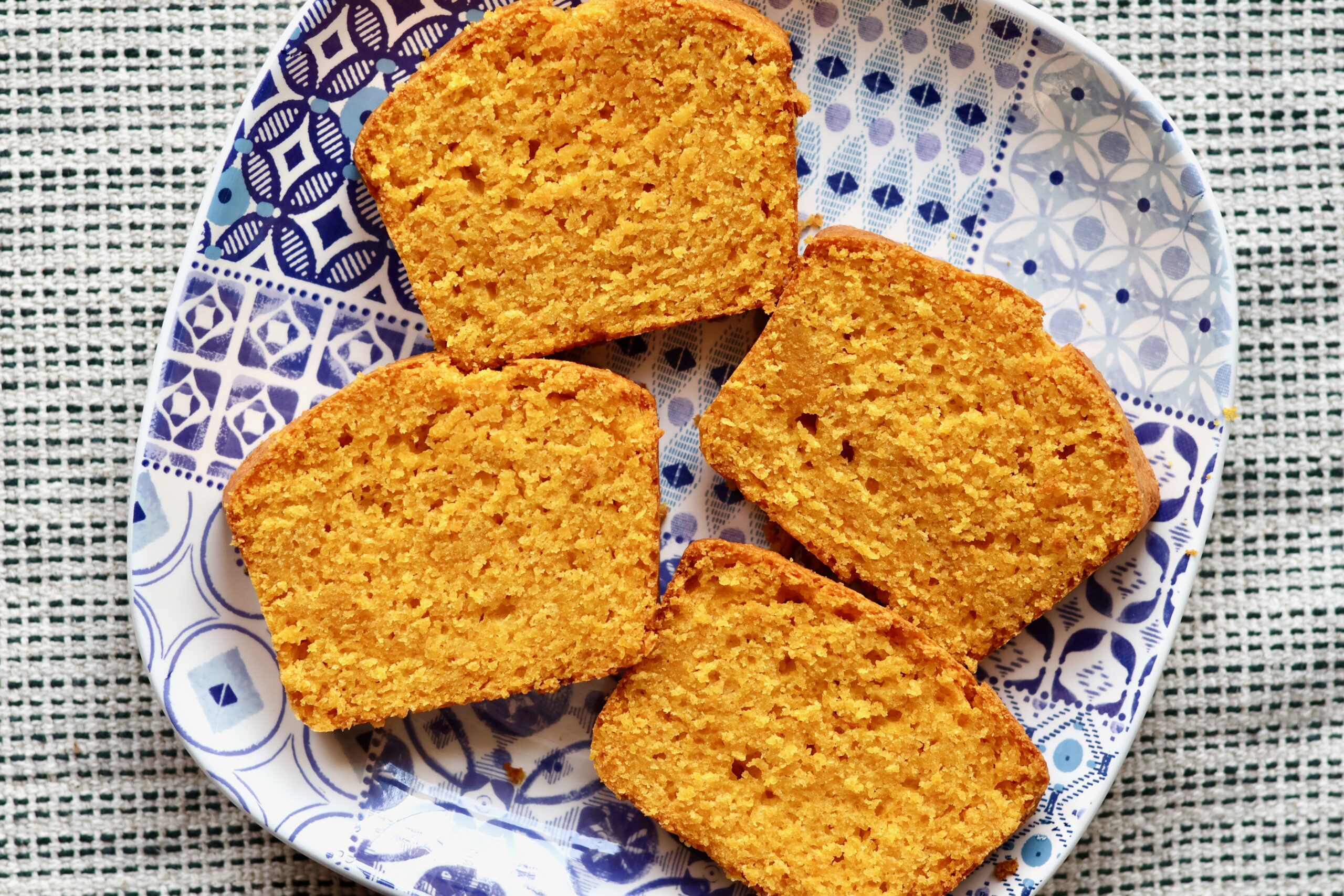
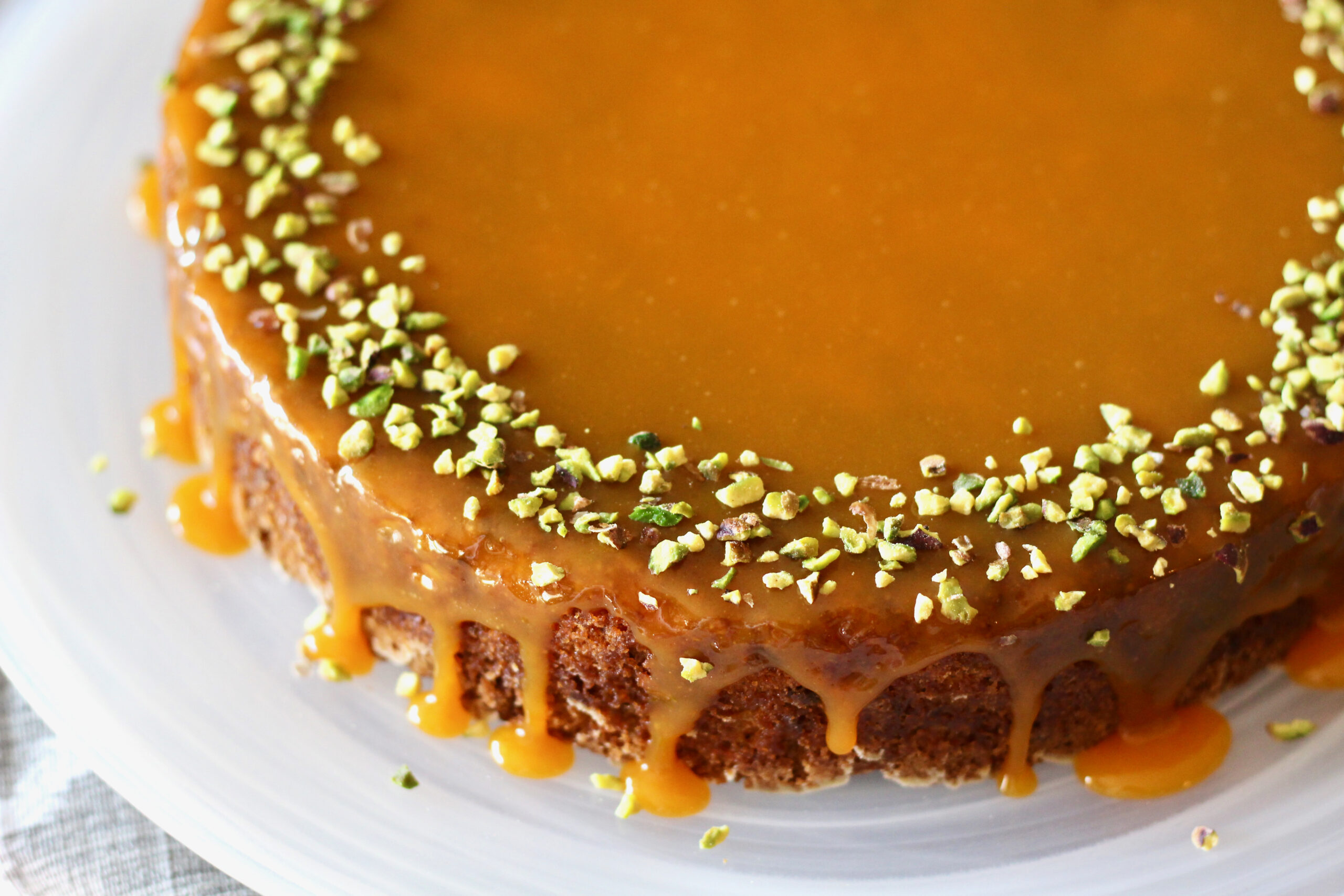
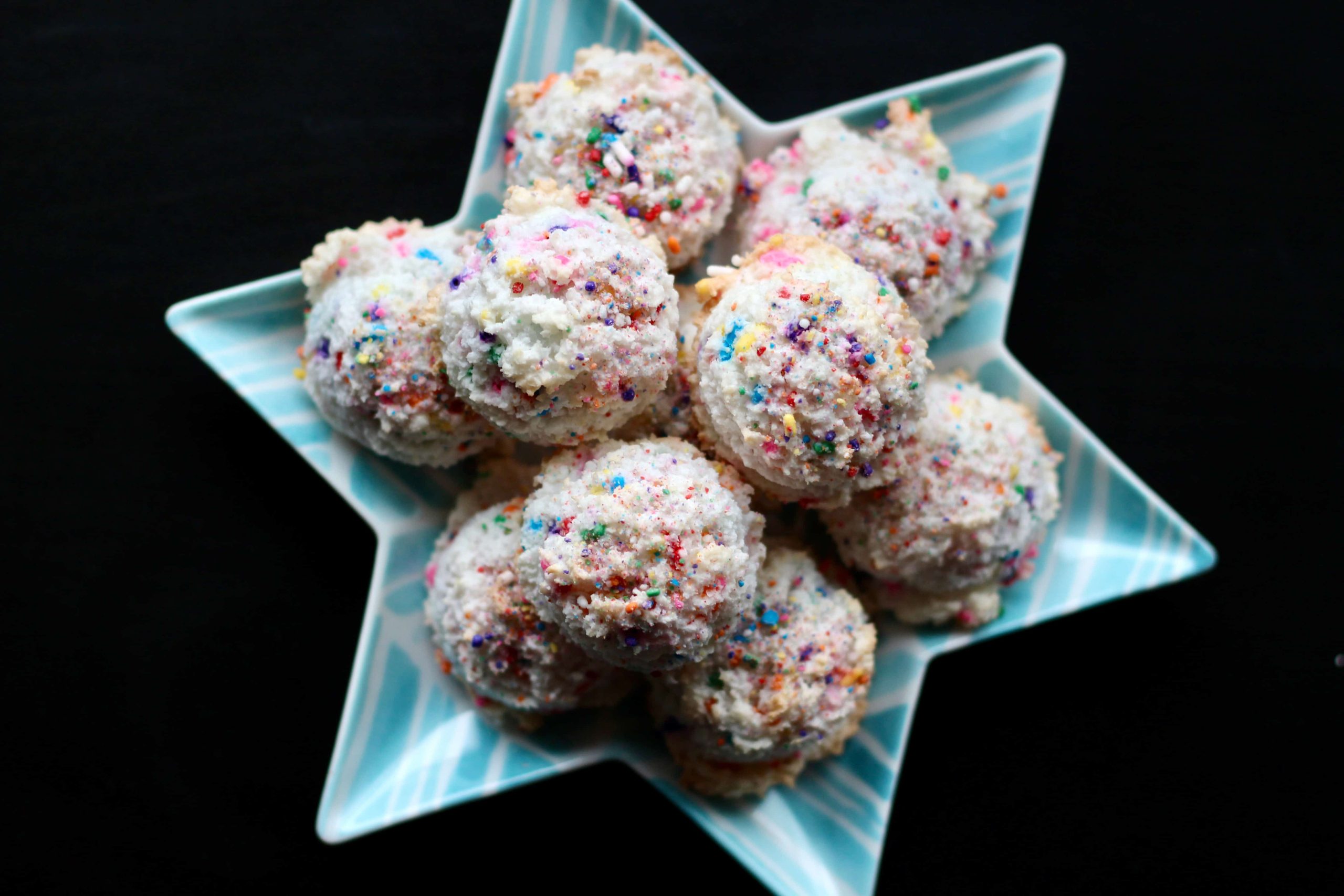
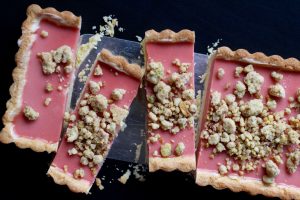

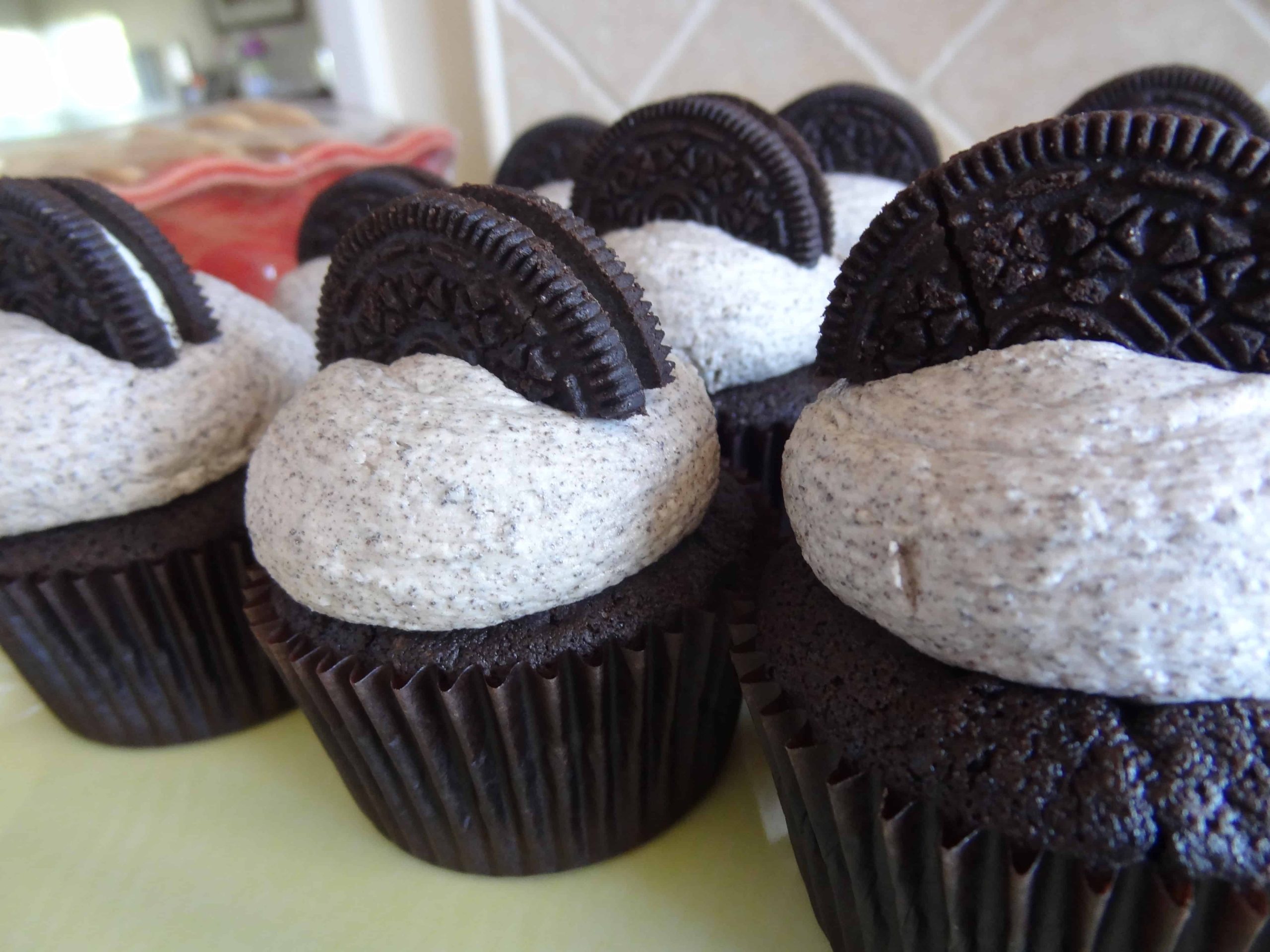

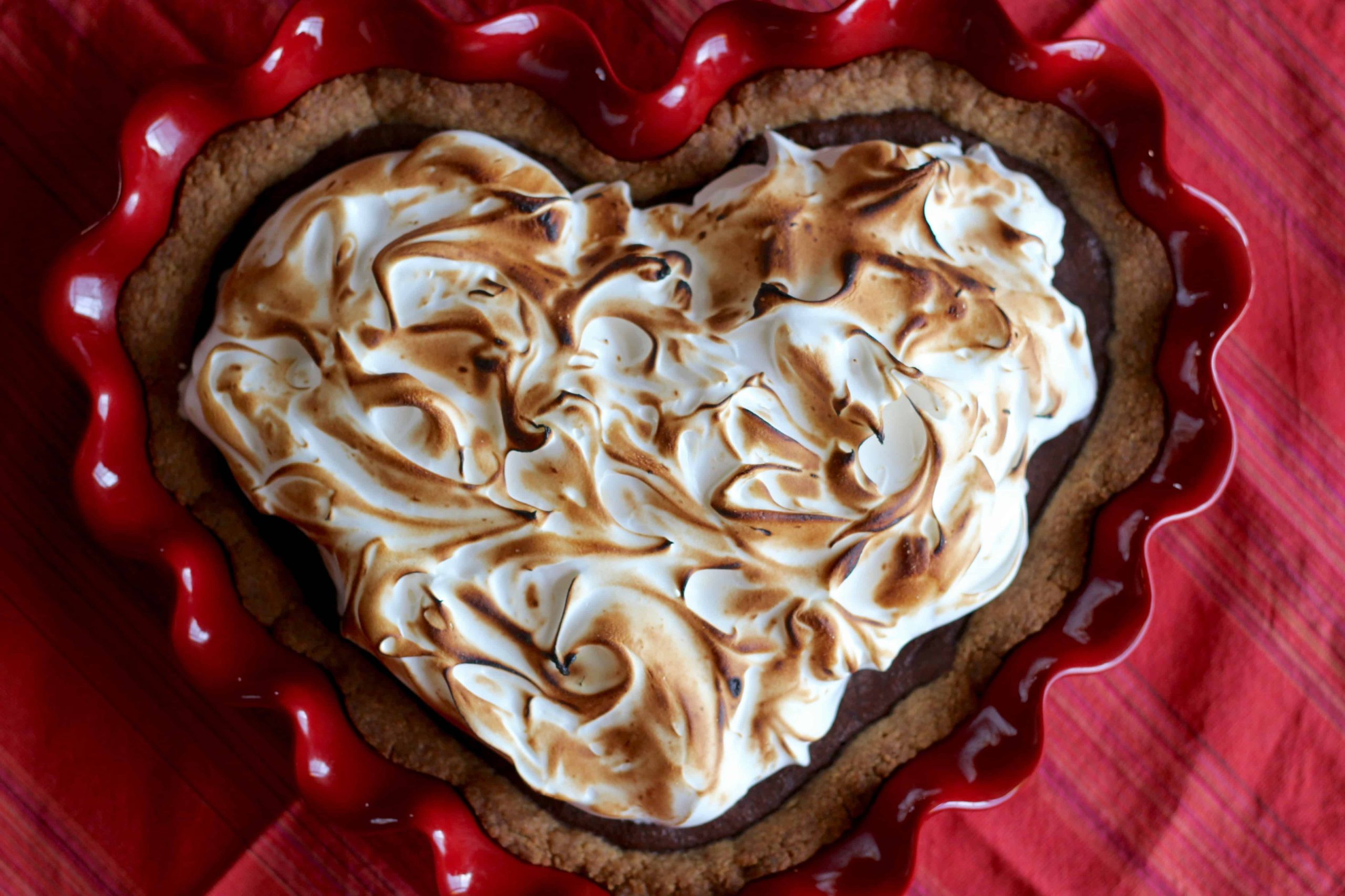
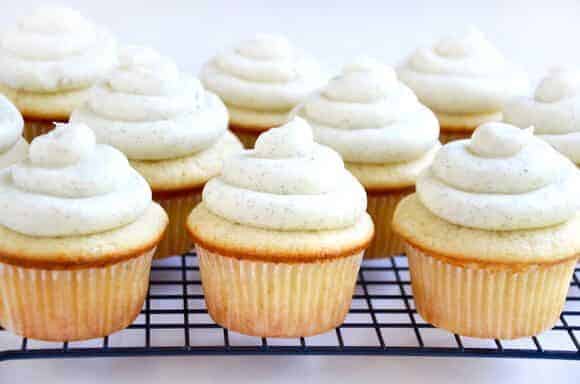
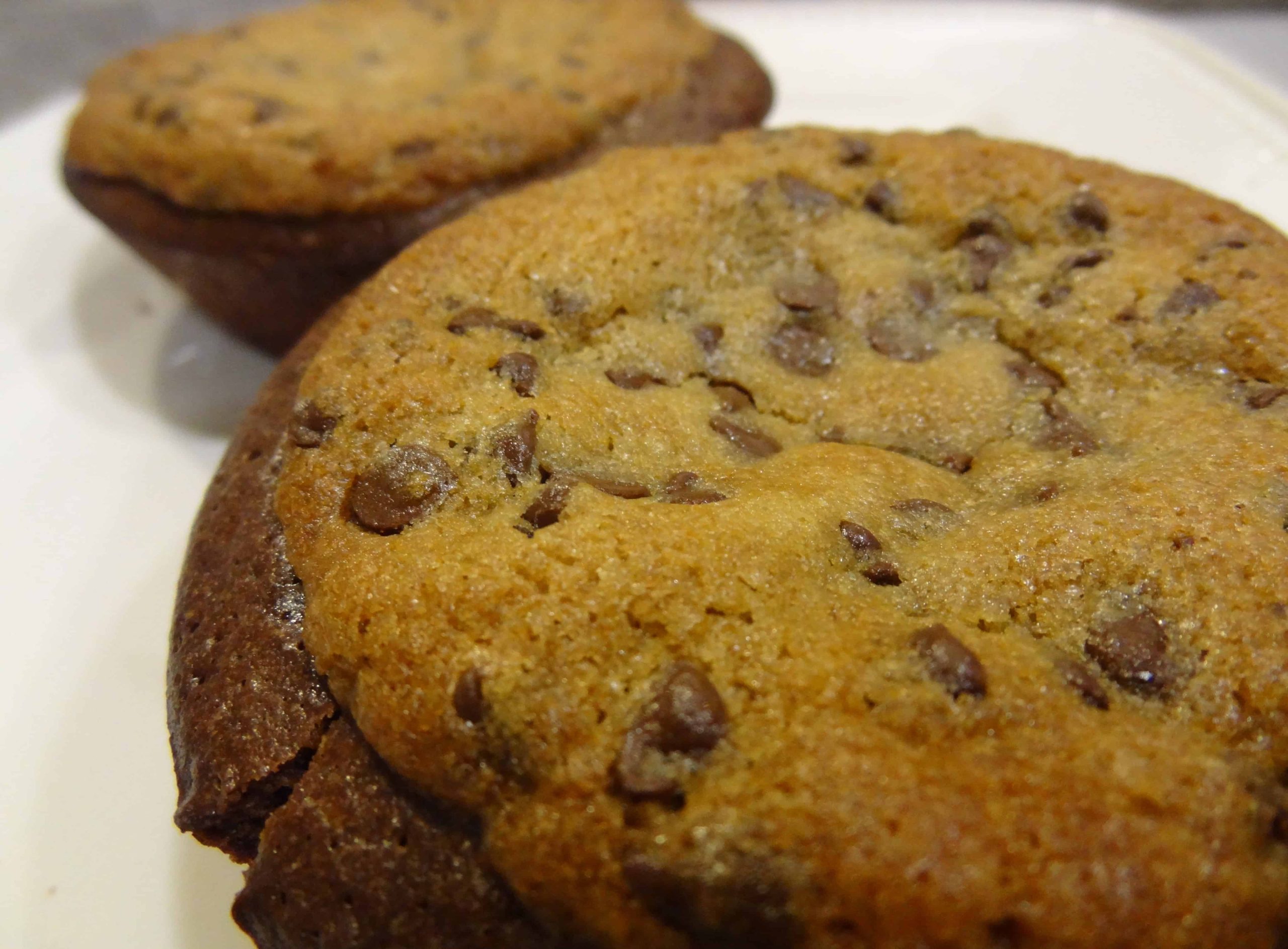
One Response